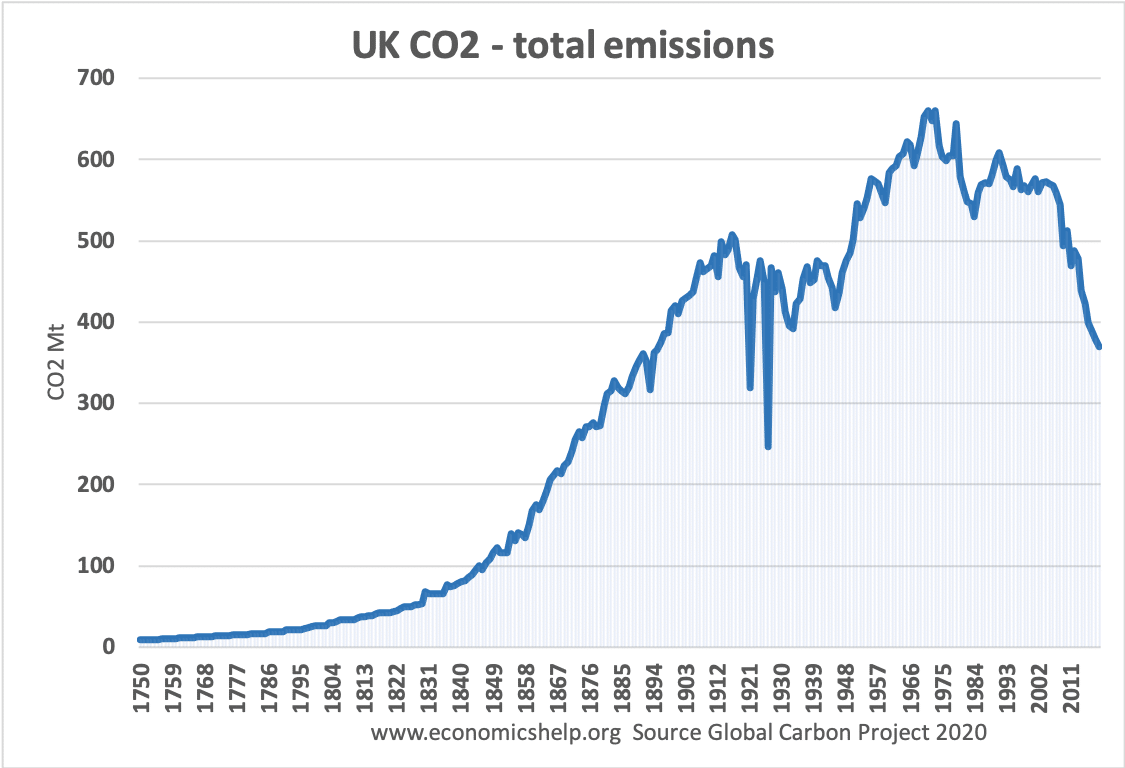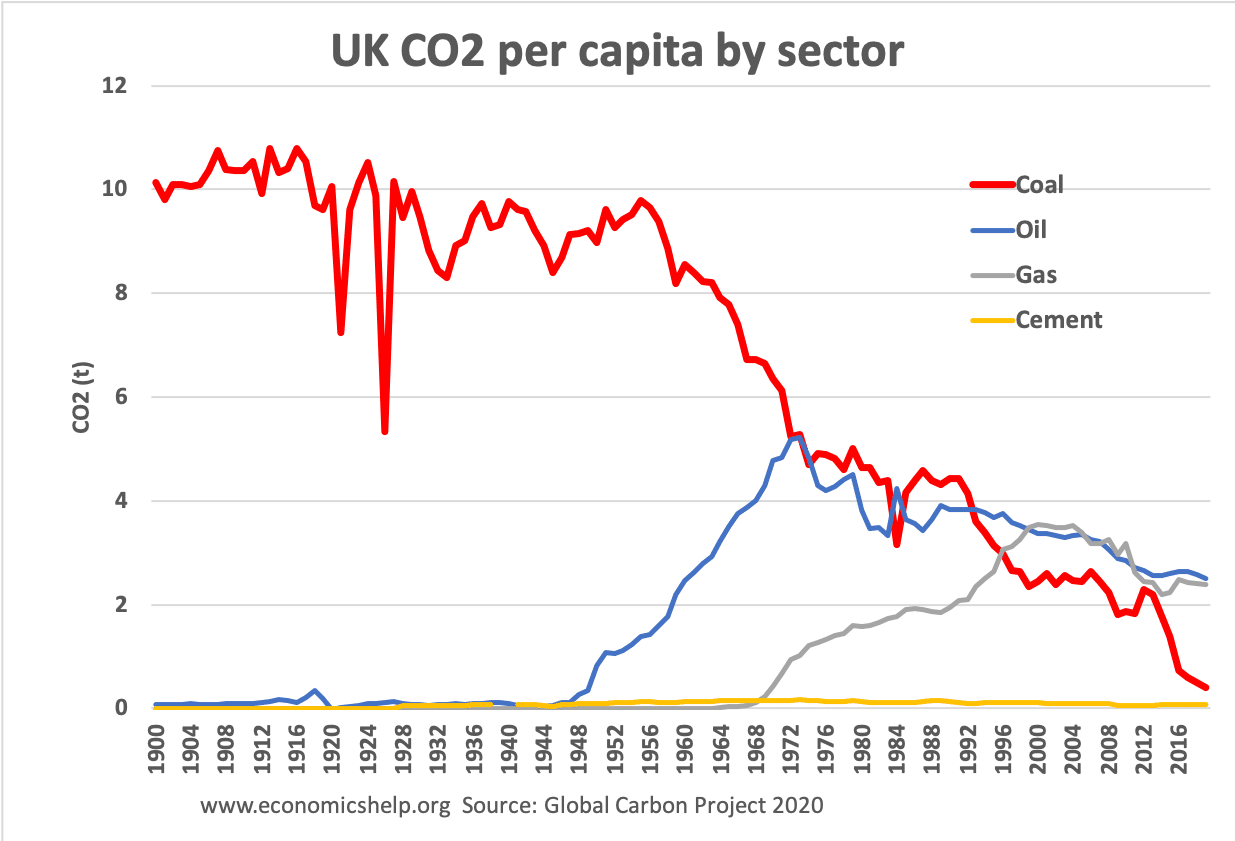Since the mid-1960s, the UK has seen a 40% fall in total CO2 emissions. CO2 Emissions are now below levels seen at the end of the industrial revolution.
Summary of why CO2 is falling
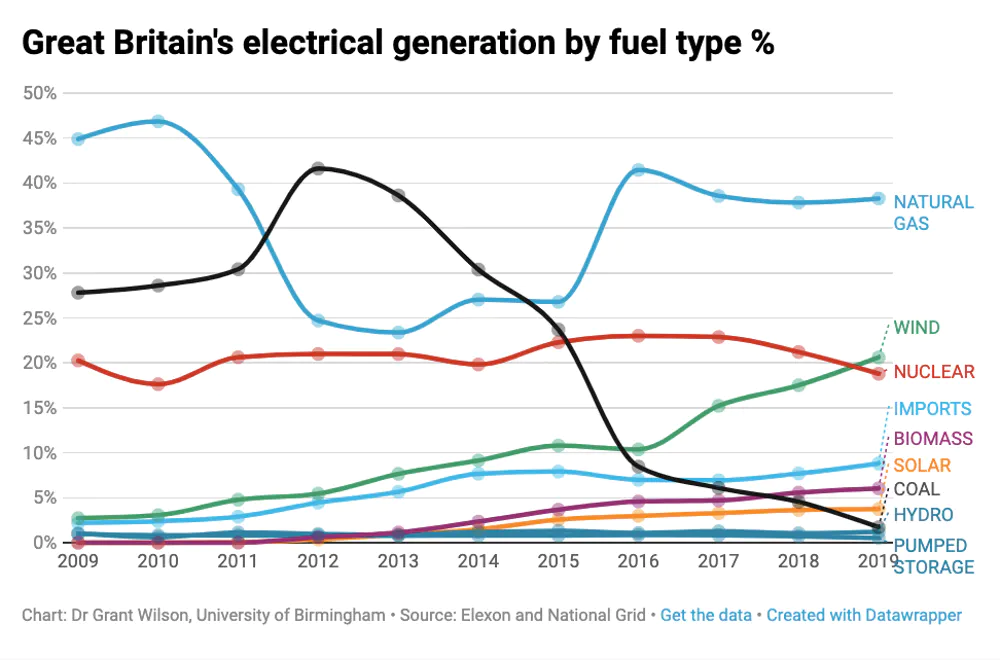
- Decline in coal-powered stations. In 2012, coal generated 41 per cent of the country’s electricity. By 2019, it supplied just 2 per cent.
- Decline in heavy manufacturing industry.
- Trade effect. UK net importer of goods so CO2 emitted in other countries which make goods for UK to consume
- Technological factors – improved efficiency of LED lights, more fuel efficient engines.
- Change in attitudes to CO2 emissions encouraging consumers and firms to reduce carbon footprint.
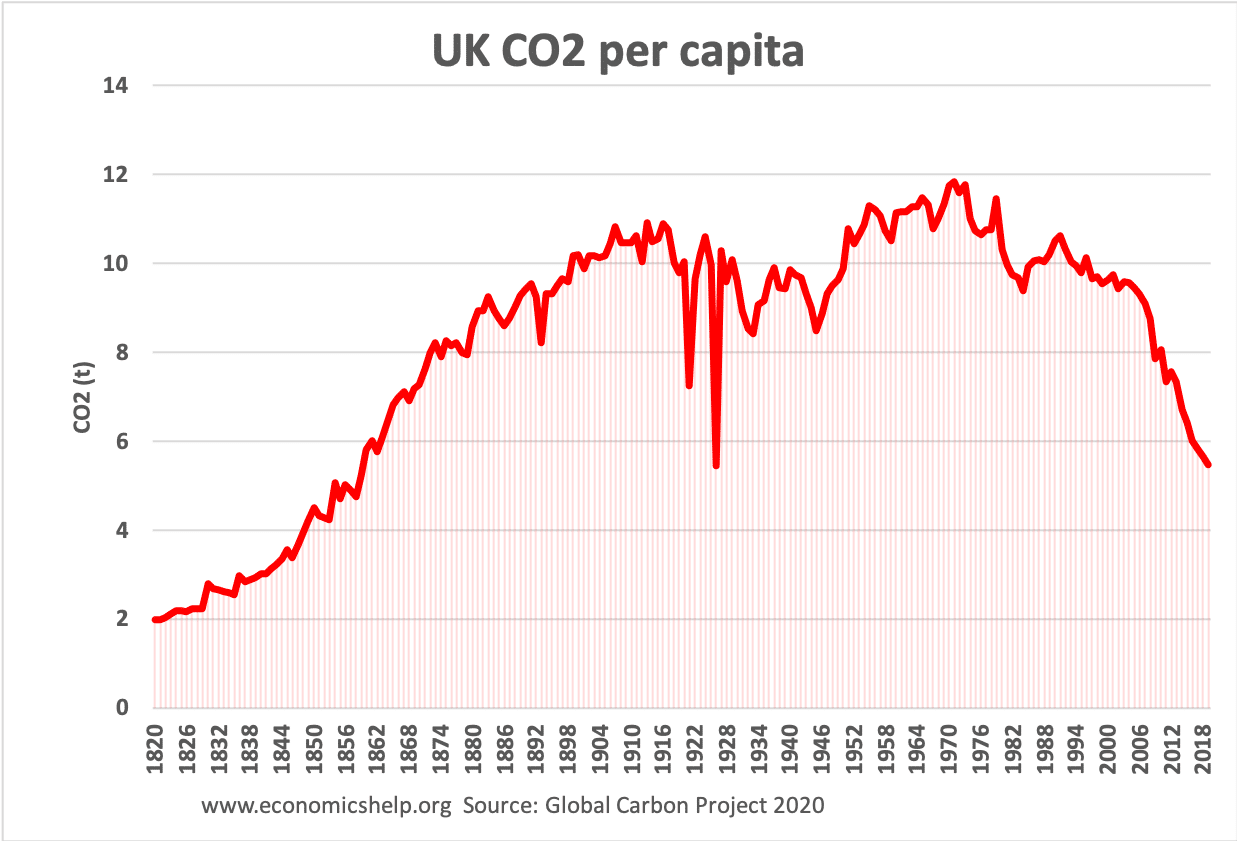
Why has CO2 emissions fallen so significantly
The over-riding factor in causing lower CO2 emissions is the decline in the use of coal. In the post-war period, steam power decline and domestic coal burning was banned by the clean air act. Industry and transport (especially trains) made the switch from coal to oil-based power stations.
In recent decades, the number of coal-powered energy stations has steadily reduced as UK’s power has come from diverse sources such as gas-powered stations, nuclear and renewables, such as wind and solar.
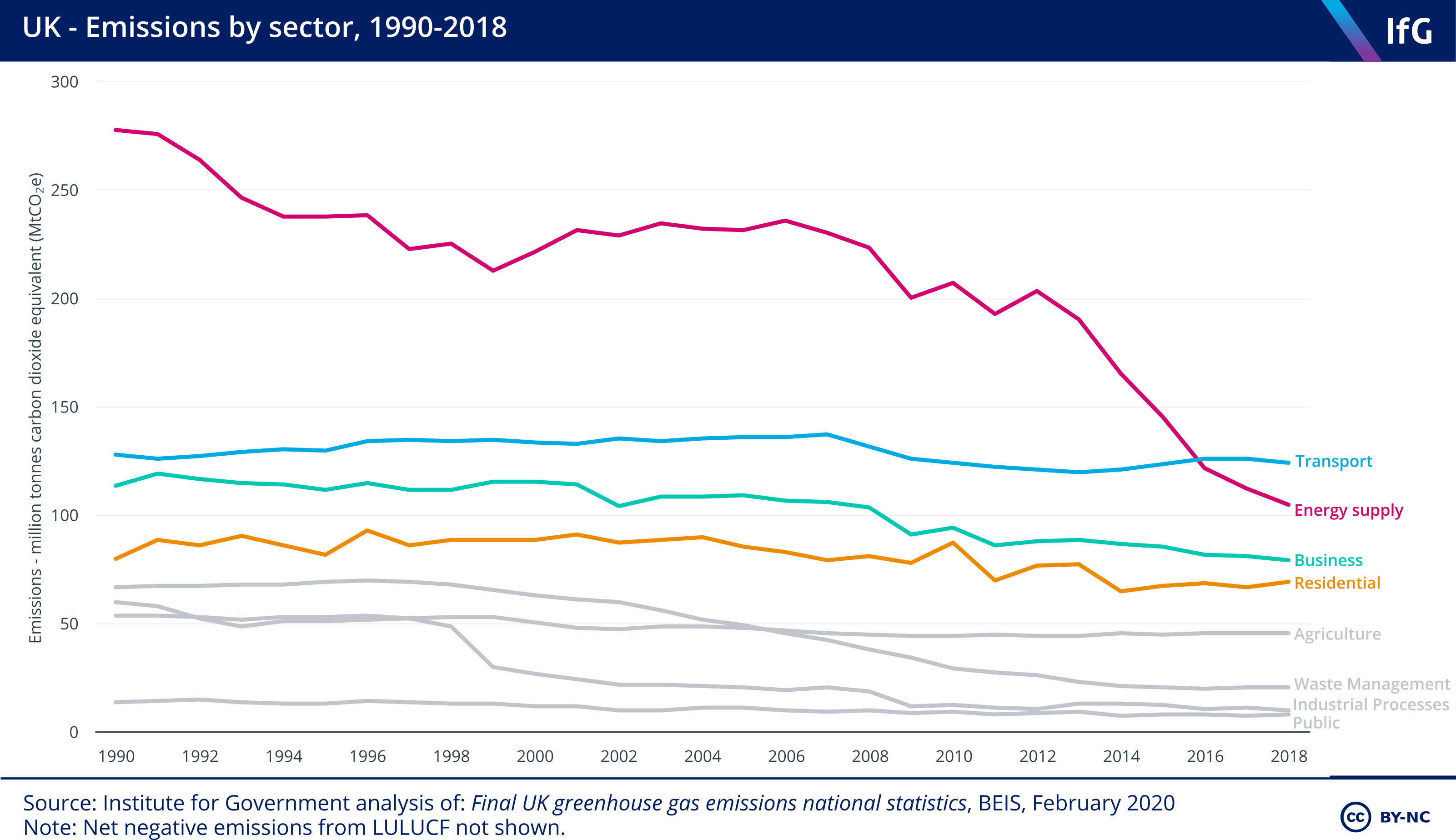
- In recent decades, it is the change in energy supply which has made the biggest contribution to declining CO2 emissions.
- Transport is fairly static with declines in CO2 from more fuel-efficient cars being offset by growth in aviation which is large net contributor to CO2 emissions.
- Industrial processes have fallen from 50 million tonnes carbon to around 10 million tonnes. This reflects a continued deinustrialisation in the UK – decline in traditional manufacturing industries, such as textiles. Also reflects more energy-efficient manufacturing processes.
How to reduce CO2 emissions further
The UK has a target of reducing CO2 to net zero by 2050 and reduce emissions by 78% by 2035 (UK Gov) In a policy paper, the UK’s ten main policies for achieving this reduction in carbon emissions include.
- Increasing off-shore wind power generation. Phasing out of coal powered stations.
- Use of low-carbon Hydrogen power. Hydrogen is seen as a potential source of very efficient and low-carbon emission energy generation. If the technology is developed, it is hoped domestic homes could see old gas heaters replaced with hydrogen power.
- Expansion of nuclear power with a second generation of nuclear power stations that can generate more electricity.
- Shift to electric powered vehicles. The government have a new law which will ban the sale of new petrol/diesel cars by 2030. This will reduce emissions from petrol/diesel and transport sector.
- Increase the percentage of journeys taken by public transport/cycling/walking. This has involved the ability for local councils to implement low-traffic neighbourhoods and school streets – to limit the access of cars.
- Subsidise and encourage the use of more greener aviation and ship fuel.
- Greener buildings. Legislation to mandate new home builds have sufficient energy efficiency and pressure to make landlords improve efficiency of existing buildings.
- Investing in carbon capture. Using technology to capture carbon from the atmosphere and store it underground, e.g. under North Sea to prevent it entering the atmosphere.
- Artificial intelligence which enables the most energy efficient use of power.
- Changing consumer and business behaviours, e.g. switch to animal-based diet.
Criticisms of UK government’s approach
- The opening of a new deep coking coal mine in Cumbria, which will increase CO2 emissions by 0.4 million tons per year, noting: “This is greater than the level of annual emissions we have projected from all open U.K. coal mines to 2050.
- Approval of gas powered 3.5 gigawatt power plant in Yorkshire, by Drax Power.
- No increase in petrol tax in recent years.
- Unwillingness to stem growth in aviation and flights
- Unwillingness to tackle emissions from meat and dairy sector.
- A lot of the ‘easy’ gains have been made, closing down coal powered stations. It will be harder to get households to switch their gas central heating because of the cost involved.
- It is has proved difficult to implement low-transport neighbourhood’s because households are attached to their cars.
- Due drilling for oil at Cambro off Shetland, which would produce 170m barrels of oil.
Related

